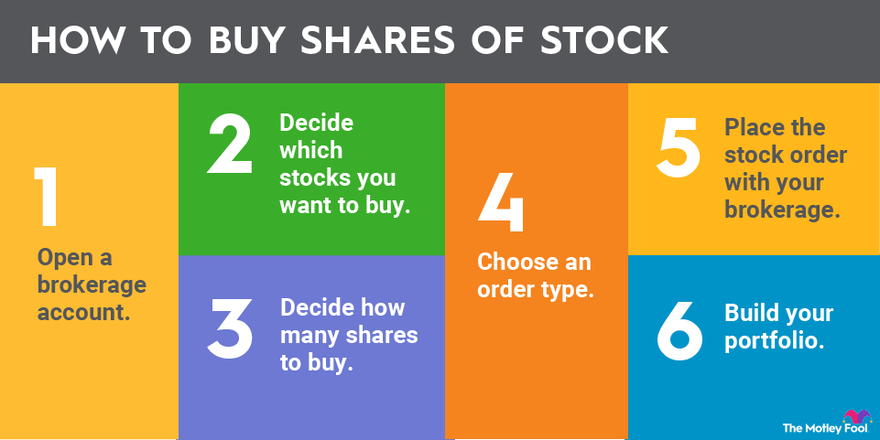How do you know what stocks to invest in? This is a question that every investor, from novice to seasoned pro, has asked themselves at one point or another. In this comprehensive guide, we’ll explore the ins and outs of stock selection, providing you with the tools and knowledge you need to make informed investment decisions.
From fundamental analysis to technical indicators, we’ll cover all the essential aspects of stock selection. We’ll also discuss different investment strategies, the importance of market sentiment, and the tools and resources available to help you make the most of your investments.
1. Research and Analysis
Conducting thorough research and analysis is essential for making informed investment decisions. Fundamental analysis involves evaluating a company’s financial statements, industry trends, and competitive landscape to assess its financial health and growth potential.
To discern which stocks to invest in, it is imperative to conduct thorough research and analysis. A prudent approach is to consider investing in the S&P 500 index, which comprises the 500 largest publicly traded companies in the United States.
For detailed guidance on how to invest in the S&P 500, refer to the comprehensive guide available here . By understanding the factors that influence stock prices and utilizing available resources, you can make informed investment decisions and potentially achieve your financial goals.
Methods for Evaluating Financial Statements
- Analyze income statements for revenue, expenses, and profitability.
- Review balance sheets for assets, liabilities, and equity.
- Examine cash flow statements for operating, investing, and financing activities.
Assessing Industry Trends and Competitive Landscapes
- Identify industry growth drivers and challenges.
- Analyze market share and competitive dynamics.
- Monitor technological advancements and regulatory changes.
Due Diligence
- Verify financial data with independent sources.
- Review management’s track record and experience.
- Consult with industry experts and analysts.
2. Technical Analysis
Technical analysis focuses on identifying stock trends based on historical price data. It uses chart patterns, indicators, and moving averages to analyze market behavior and predict future price movements.
Chart Patterns
- Identify support and resistance levels.
- Recognize bullish and bearish patterns.
- Analyze volume and momentum.
Indicators
- Use moving averages to smooth price data.
- Apply oscillators to identify overbought and oversold conditions.
- Employ trendlines to identify support and resistance.
Moving Averages
- Calculate simple moving averages (SMAs).
- Use exponential moving averages (EMAs) for quicker responsiveness.
- Apply weighted moving averages (WMAs) for greater emphasis on recent prices.
Limitations of Technical Analysis
Technical analysis is a subjective method that relies on historical data. It cannot predict future price movements with certainty and should be used in conjunction with fundamental analysis.
3. Investment Strategies
Various investment strategies exist, each with its own risk and return profile. Common strategies include:
Growth Investing
Focuses on investing in companies with high growth potential and strong earnings prospects.
Value Investing
Aims to buy stocks that are trading at a discount to their intrinsic value.
Dividend Investing
Prioritizes investing in companies that pay regular dividends, providing a stream of passive income.
Diversification
Distributing investments across different asset classes, industries, and companies to reduce risk.
Risk Management
Setting stop-loss orders and managing portfolio volatility to protect against losses.
Setting Investment Goals and Time Horizons, How do you know what stocks to invest in
Defining financial objectives and investment timelines to guide decision-making.
4. Market Sentiment and News
Market sentiment and news events can significantly impact stock prices. It is important to monitor these factors to make informed investment decisions.
Market Sentiment
- Use indicators like the VIX to gauge market volatility.
- Analyze social media sentiment for insights into investor sentiment.
- Monitor news headlines and economic data for potential market-moving events.
Company-Specific News
- Stay informed about earnings reports, product launches, and management changes.
- Read industry publications and analyst reports for insights into company performance.
- Attend company investor presentations and conference calls for direct access to management.
5. Tools and Resources: How Do You Know What Stocks To Invest In

Numerous financial websites and databases provide valuable tools for stock analysis and research.
Financial Websites
- Yahoo Finance: Provides real-time stock quotes, financial statements, and news.
- Morningstar: Offers in-depth research reports, portfolio tracking, and investment recommendations.
- Seeking Alpha: Features expert analysis, earnings transcripts, and investor discussions.
Stock Analysis Platforms
- Bloomberg Terminal: A comprehensive platform for professional investors.
- Thomson Reuters Eikon: Provides real-time data, charting tools, and news feeds.
- MetaStock: Offers technical analysis software with advanced charting capabilities.
Summary
Investing in stocks can be a complex and challenging endeavor, but it can also be incredibly rewarding. By following the principles Artikeld in this guide, you can increase your chances of success and achieve your financial goals.
Quick FAQs
What is the most important factor to consider when selecting stocks?
The most important factor to consider when selecting stocks is the company’s financial health. You should look at factors such as revenue growth, profitability, and debt levels to assess the company’s overall financial strength.
How can I learn more about stock selection?
There are many resources available to help you learn more about stock selection. You can read books, articles, and blog posts on the topic. You can also attend seminars and workshops offered by investment professionals.
What is the best way to diversify my investment portfolio?
The best way to diversify your investment portfolio is to invest in a variety of asset classes, such as stocks, bonds, and real estate. You should also invest in a variety of industries and sectors to reduce your risk.
